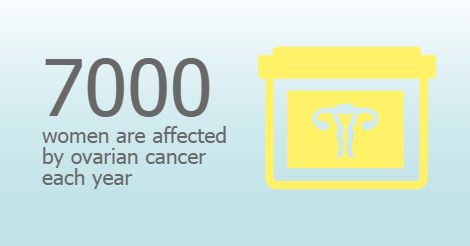9Coach (blog) |
Why you need to identify eczema triggers — before they strike
9Coach (blog) Eczema affects one in five children under two years old and while it usually improves with age, those who are stuck with it into their teen years and adulthood often find it very frustrating to live with. "The basic problem is skin dryness, which … |



Tag Archives: before
Why you need to identify eczema triggers — before they strike – 9Coach (blog)
9Coach (blog) |
Why you need to identify eczema triggers — before they strike
9Coach (blog) Eczema affects one in five children under two years old and while it usually improves with age, those who are stuck with it into their teen years and adulthood often find it very frustrating to live with. "The basic problem is skin dryness, which … |
Why you need to identify eczema triggers — before they strike – 9Coach (blog)
9Coach (blog) |
Why you need to identify eczema triggers — before they strike
9Coach (blog) Eczema affects one in five children under two years old and while it usually improves with age, those who are stuck with it into their teen years and adulthood often find it very frustrating to live with. "The basic problem is skin dryness, which … |
Why you need to identify eczema triggers — before they strike – 9Coach (blog)
9Coach (blog) |
Why you need to identify eczema triggers — before they strike
9Coach (blog) Eczema affects one in five children under two years old and while it usually improves with age, those who are stuck with it into their teen years and adulthood often find it very frustrating to live with. "The basic problem is skin dryness, which … |
Detecting melanoma before it becomes invasive
Newly discovered dermoscopy features differentiate melanoma in situ from benign lesions, shows a study in JAMA Dermatology.
Modern medicine – dermatology
3 before GP
Patients are being urged to adopt a new three-step approach in order to help relieve pressures on GP services over the winter.
The Royal College of GPs (RCGP) have launched a campaign called ‘3 before GP’ which refers to three questions patients should ask themselves before booking an appointment with their GP:
Can I?
- Self-care
- Use NHS Choices or a similar reputable website/resource
- Seek advice/treatment via a pharmacist
The RCGP hopes this campaign with its easy to use slogan will encourage patients to think hard about whether they need to see a GP during the busy winter period or if they can deal with their health issue in a different way.
Workload has increased by 16% in surgeries over the last seven years, but the number of GPs has not risen with demand.
And yet research undertaken by the Primary Care Foundation in 2015 revealed that 27% of GP consultations were potentially avoidable.
Professor Helen Stokes-Lampard, Chair of the Royal College of GPs, said: “GPs are under immense pressures all year round, but, as we know, the colder months bring additional challenges.
“Not being able to get an appointment is frustrating for both patients and GPs, but there are a variety of alternatives to consider first and I would encourage patients with more minor illnesses to think hard about whether they actually need to see a GP.
“The ‘3 before GP’ mantra is a simple and easy way to help reduce the strain on general practice, and we hope it will enable GPs to spend more time with patients who have complex health issues and are most in need of our expert help.”
Eczema treatment before and after: Woman CURED her skin with THIS £1 bathing trick – Express.co.uk
Express.co.uk |
Eczema treatment before and after: Woman CURED her skin with THIS £1 bathing trick
Express.co.uk The symptoms affected Vicky's confidence and self-esteem, and she felt helpless about how to improve her skin. Around four years ago she was prescribed protopic cream, which is an immunosuppressant used to treat severe eczema when other creams and … |
Before removing lesion, investigate LM
A recent study found that cosmetic treatments performed on presumed benign pigmented lesions later found to be lentigo maligna (LM) is not an uncommon occurrence, underscoring the need for individuals performing cosmetic procedures to be more vigilant in thoroughly investigating suspicious lesions.
Dermatology Times – Dermatology
My Winter Rosacea Skin Care Routine to Stop Flare-Ups Before They Happen
When I stepped out the door to walk the dogs this morning, the sun was shining brightly despite the fact that it was -9ºC with a wind chill factor of -16ºC. At this time last year, the weather in my little part of Canada didn’t even require a winter coat. This year, winter arrived early and with a vengeance. To prevent spending the rest of the season with burning, bright red cheeks, I’ve had to get my act together and put my winter rosacea skin care routine together.
 Winter’s cold and windy weather is a disaster for those of us whose cheeks are rosy at the best of times. Even if you live in a part of the world that doesn’t experience extremes of cold that are quite as intense as mine, the odds are that your winters are far cooler, rainier or snowier than your summers. If your skin’s anything like mine, that means you’re going to need to switch up your skin care products and the way you use them.
Winter’s cold and windy weather is a disaster for those of us whose cheeks are rosy at the best of times. Even if you live in a part of the world that doesn’t experience extremes of cold that are quite as intense as mine, the odds are that your winters are far cooler, rainier or snowier than your summers. If your skin’s anything like mine, that means you’re going to need to switch up your skin care products and the way you use them.
Transitioning from Summer to Winter Skin Care for Rosacea
I usually start my winter rosacea skin care transition in the autumn. That gives my skin enough time to get used to the products by the time the cold weather has truly arrived. This year, I didn’t have as much of a chance to do that as is usually the case. Before I knew it, winter had simply arrived.
 While there are lots of overall changes I make to protect my skin from the cold – sitting away from fireplaces/heating vents, wearing a scarf over my face to protect it from the wind, using a humidifier in my room at night, and so on – today I’m going to focus on the actual skin care products I use and the way I use them.
While there are lots of overall changes I make to protect my skin from the cold – sitting away from fireplaces/heating vents, wearing a scarf over my face to protect it from the wind, using a humidifier in my room at night, and so on – today I’m going to focus on the actual skin care products I use and the way I use them.
I take a lot of care in designing my winter skin care routine. Every year it’s a little bit different because I’m continually tweaking and updating it. I learn more about my rosacea symptoms and triggers all the time, which helps me to gradually perfect my skin care routine from one season to the next.
My Basic Winter Rosacea Skin Care Routine
This year, my winter rosacea skin care routine consists of the following. I adhere to it extremely strictly because consistency is one of the most important parts of my flare-up avoidance efforts.
- Cleanser – This is one part of my skin care routine that can stay the same throughout the year. I use a creamy, non-foaming, exceptionally gentle cleanser throughout the year. I feel that consistency with this product helps to make the transition to some of the other products a little easier. I wash my face twice per day – once in the morning after I walk the dogs and once last thing at night – with water on the cooler side of warm and my fingertips, not a facecloth or sponge.
- Tonic – Although many toners are too harsh for rosacea-prone skin, I’ve had a lot of luck with a tonic that helps to restore my skin’s pH balance after cleansing. I give my face a light spray with the product immediately after I wash my face, while it’s still damp.
- Moisturizer – While a lotion is often enough for my skin in the summer, the wintertime requires a heavier cream if I’m going to avoid lizard-like scaly skin, particularly around the outer part of my cheeks and my chin. I apply my gentle face cream before the tonic has fully dried. Once I’ve spread it evenly over my face, I tap my face very lightly with my fingertips. Recently I learned that gently tapping a moisturizer into your skin is considerably more effective at encouraging its absorption than rubbing your face. I also find that my skin doesn’t turn as pink when I apply my moisturizer by drumming my fingertips all over my face instead of trying to rub it in. Yes, I might look like I’m attempting to play the piano on my cheeks but I feel that I’m getting more out of my moisturizer this way, so it’s worth it!
Other Rosacea Skin Care Products I Love in Wintertime

Those products make up the very core of my rosacea skin care routine for the winter.
However, I also use certain other products for specific purposes that I feel are worth discussing.
- Rosacea salve – As I mentioned earlier, I walk dogs every morning. They’re a neighbour’s dogs and I love them to bits. As long as it’s above -17ºC you’ll see me, a Yorkshire Terrier and a Boston Terrier all bundled up and headed down the street, trudging through the snow. At that temperature, a scarf isn’t enough to cover my face. I spread a rosacea salve rich with seabuckthorn seed and fruit oils, chamomile oil and several other fantastic ingredients over my cheeks to keep the bite of the cold and wind from affecting my symptoms. I wash it off as soon as I get home.
- Sunscreen (sun cream) – The cold doesn’t stop UV rays from reaching my skin. Since the sun is one of the top rosacea triggers, I feel that it’s just as important to use sunscreen throughout the winter months as it is to use it in the summertime. The only difference is that I need it only on my face as that’s the one part of my skin that still experiences direct sun exposure. Since I have yet to find a chemical sun cream that doesn’t cause my skin to flare up, I use an all-natural product based on zinc oxide. I apply it directly to my face or, on very cold days, I apply it on top of the rosacea salve. I wash it all off once I get home again.
- Exfoliator – I gently exfoliate my face with an all natural product that uses jojoba beads (not plastic microbeads!) to encourage the loosening of dead skin cells or any product buildup so they can be washed away. In the summer, I do this twice per week (as long as I’m not having a flare-up at the time), but in the winter, I drop this practice back to once per week. Exfoliating is still important, but as my skin needs more gentle care in the winter, I don’t do it as often.
- Hydrating mask – To help to inject some life back into my skin after it is continually dried out in heated buildings and the frigid windy weather outside, I use a deep hydrating moisture mask. It is an all-natural product that I spread over my face at night. It gradually sinks in throughout the night and helps to replace more of the lost moisture. This product is one that I use once per week in the summer but that I use twice per week in the winter.
With these winter rosacea skin care products and a careful effort to drink lots of water and avoid triggers, I can typically manage to keep my symptoms under control and the number of flare-ups I experience to a minimum. In that effort, I have also included a daily home LED light therapy treatment into my routine, as well. I’ll be sure to tell you more about that in my next blog post in January 2017!
Do you have favourite products for winter skin care for rosacea? Please share them in the comments. I’d love to hear about them!
Innovative ovarian cancer test detects the disease before symptoms are present
Find out more about the brand new ROCA test, which is helping to detect ovarian cancer at an earlier stage before any symptoms are present.
Ovarian cancer is common in the UK, affecting around 7,000 women each year. It can often be difficult to spot the symptoms, meaning many women are not diagnosed until the disease is in its later stages and has spread to other parts of the body. For this reason, ovarian cancer is often described as the silent killer. There is now a brand new test for ovarian cancer, called the ROCA Test. Here, we explain more about this disease and what the new test means for diagnosis.

You are more likely to develop ovarian cancer if you are older, as eight in ten cases occur in women who have gone through menopause. In one in ten cases, there is a genetic link so, if two or more of your close family members have a history of ovarian cancer or breast cancer, then you should discuss this with your doctor.
Spotting ovarian cancer
Early diagnosis of ovarian cancer is the most important factor in increasing the chance of successful treatment. However, most women don’t realise they have it until the late stages when the cancer is more aggressive. Currently, three quarters of women with the disease are only diagnosed once the cancer has already spread. Only three percent of women in the UK say they feel very confident about recognising a symptom of ovarian cancer.
The best way to protect yourself is to be vigilant for the signs and symptoms. You should look out for the following:
- increased abdominal size or persistent bloating;
- difficulty eating and feeling full;
- pelvic or abdominal pain; and
- needing to wee more urgently or more often.
These symptoms can be caused by countless other conditions and aren’t usually a cause for concern. However, with ovarian cancer the symptoms happen frequently – typically more than 12 times in a month, and are more persistent. Make sure you see a doctor if you are concerned about any of the symptoms mentioned above.
The ROCA Test
The ROCA Test is a simple blood test and it forms the first part of a multimodal screening for ovarian cancer. The results of the blood test give healthcare professionals an indication of how likely a woman is to have ovarian cancer, and whether she should undergo additional testing. Further tests are often more invasive, but give a more conclusive answer.
The ROCA Test has undergone extensive research by the UK Collaborative Trial of Ovarian Cancer Screening (UKTOCS). After 15 years and 670,000 screenings, UKTOCS has announced that the ROCA Test is safe and effective. Multimodal screening using the ROCA Test identified 85 out of 100 cancers, which is twice as many as would have been found by a conventional test.
What does this mean for women?
The ROCA Test could help to prevent one in five deaths from ovarian cancer by diagnosing women earlier. This test is able to detect ovarian cancer before the woman experiences any symptoms and is particularly useful for monitoring women who are known to have a high genetic risk of ovarian cancer. This means that more women can be diagnosed earlier, when the disease is easier to treat.
How can I get tested?
BMI Healthcare is now offering the ROCA Test across the country, but it is not currently available on the NHS. If you choose to have the ROCA Test, you will be cared for by BMI gynaecological consultants at one of their screening clinics. You can find out more about cancer screening and treatments at the cancer care hub.
Content Supplied by BMI Healthcare

